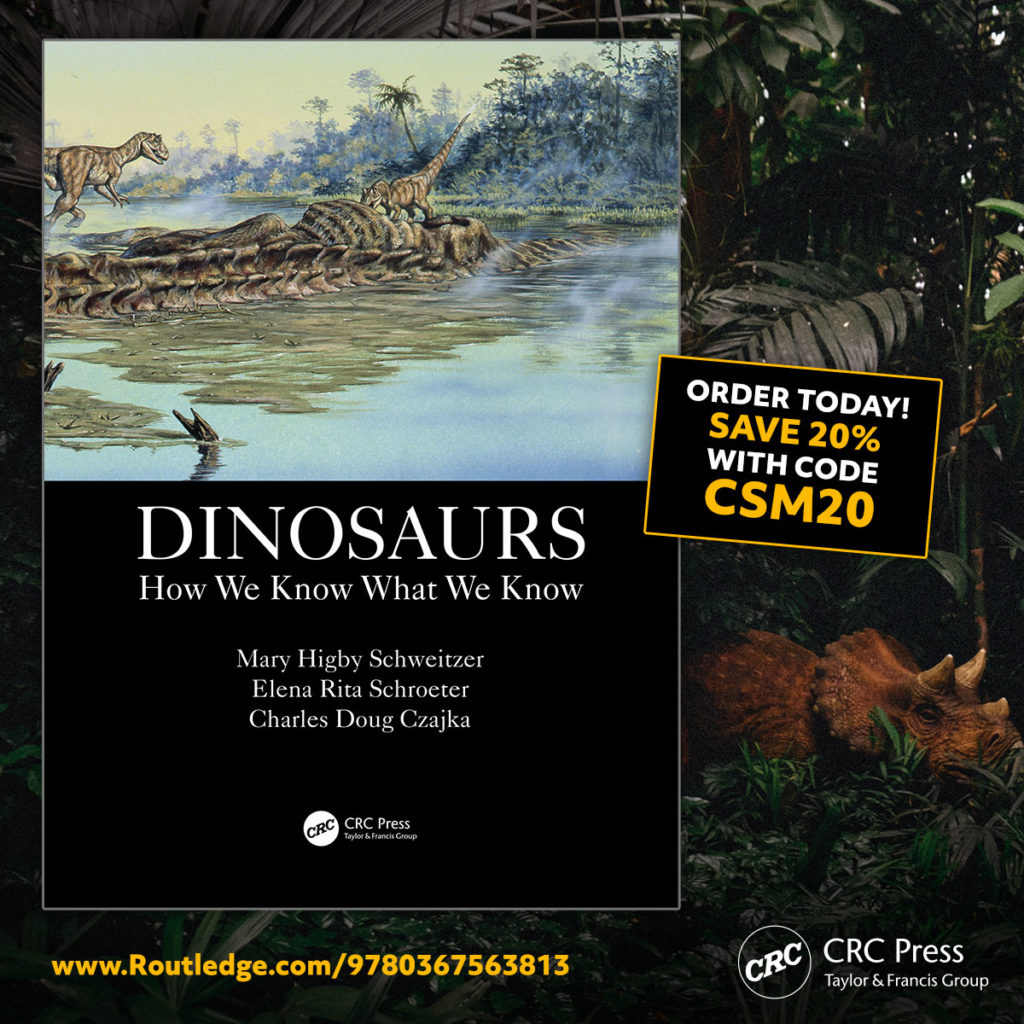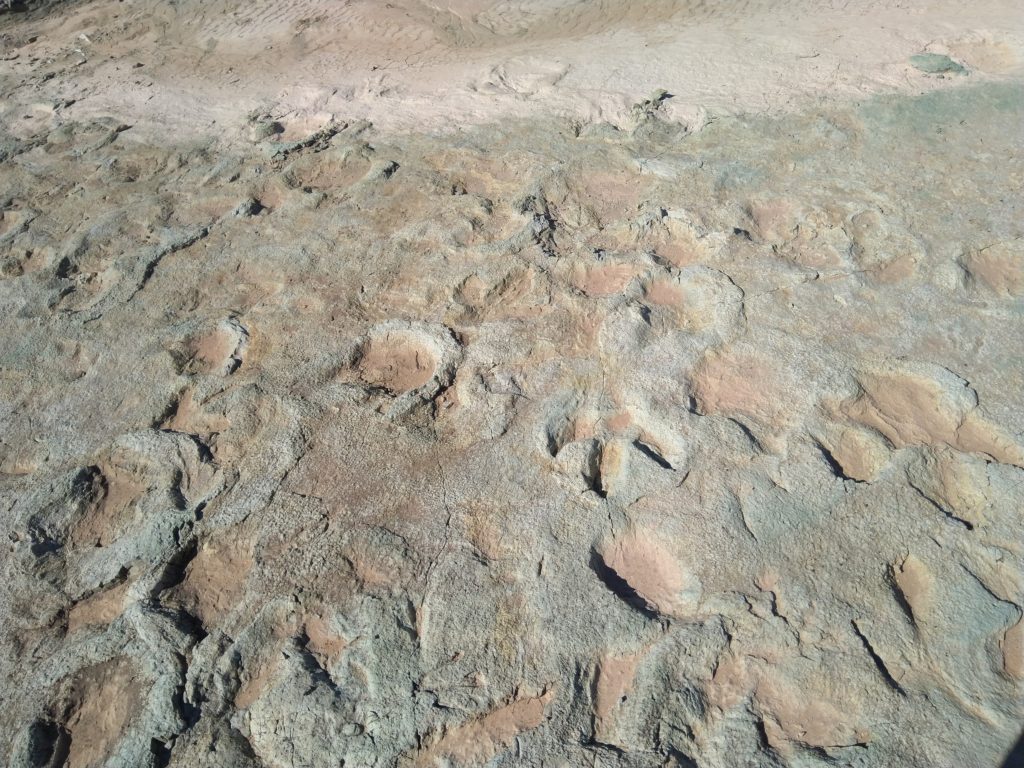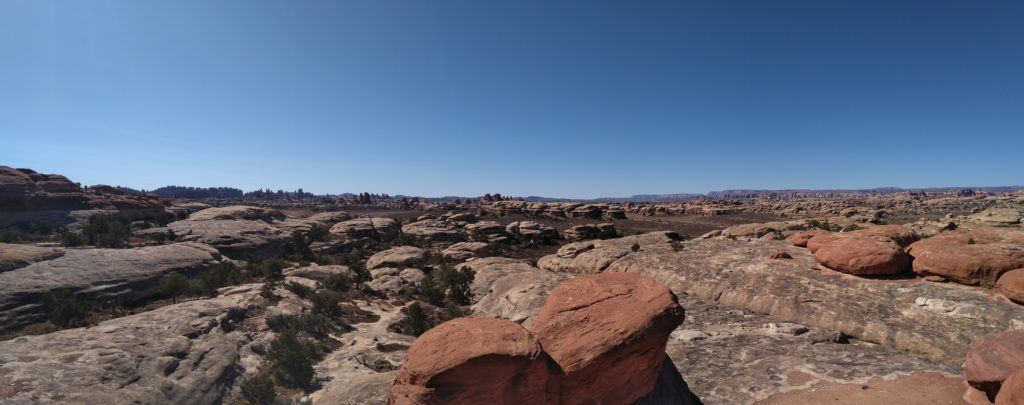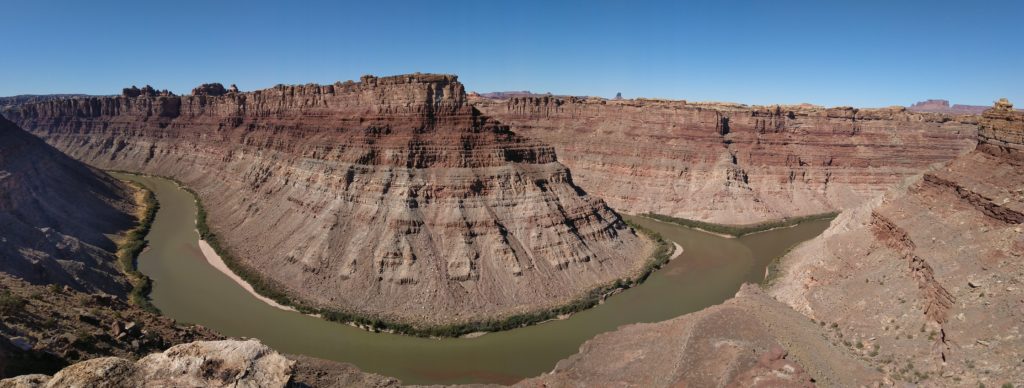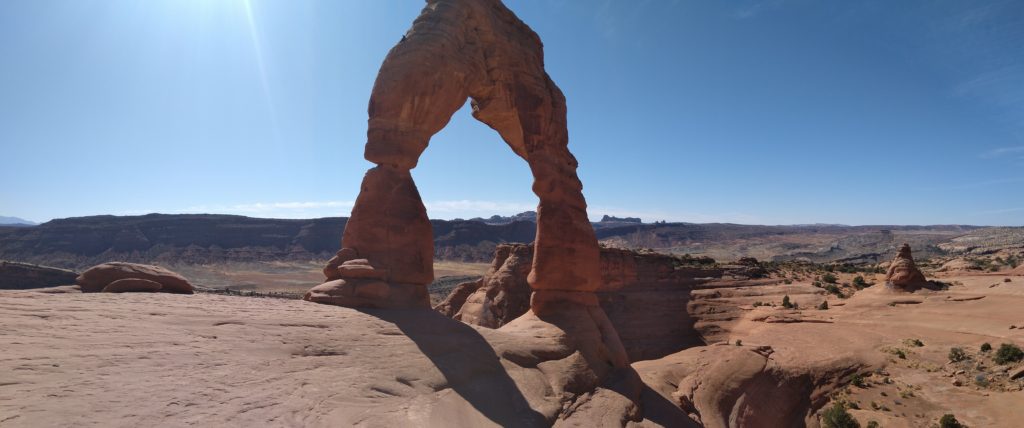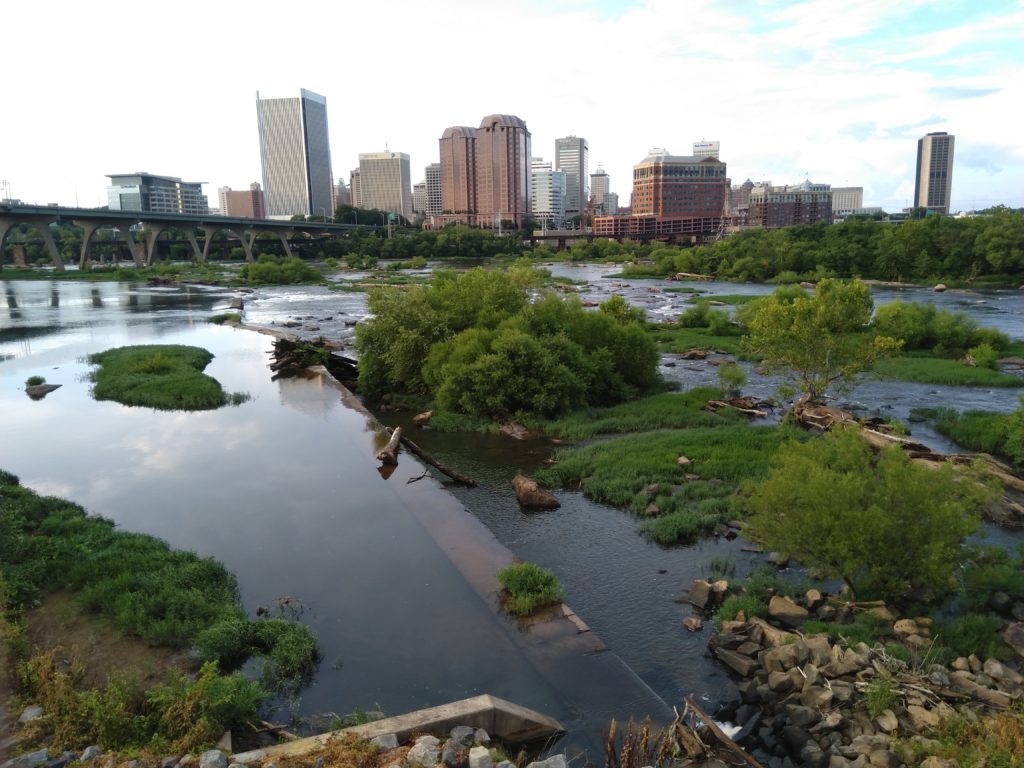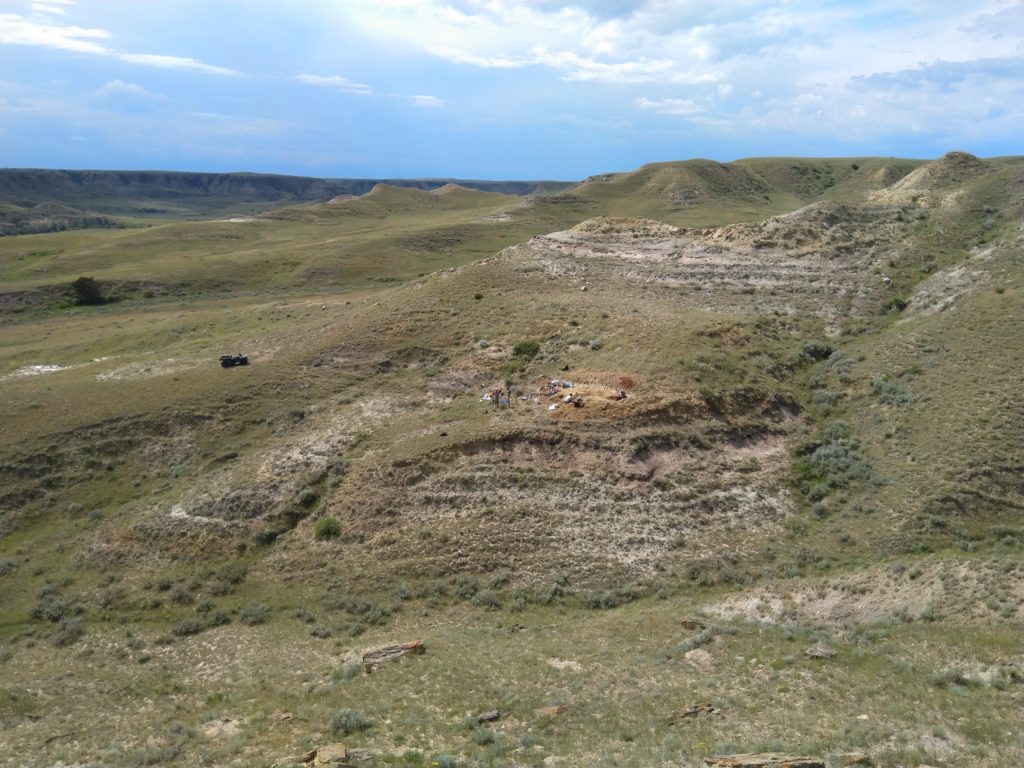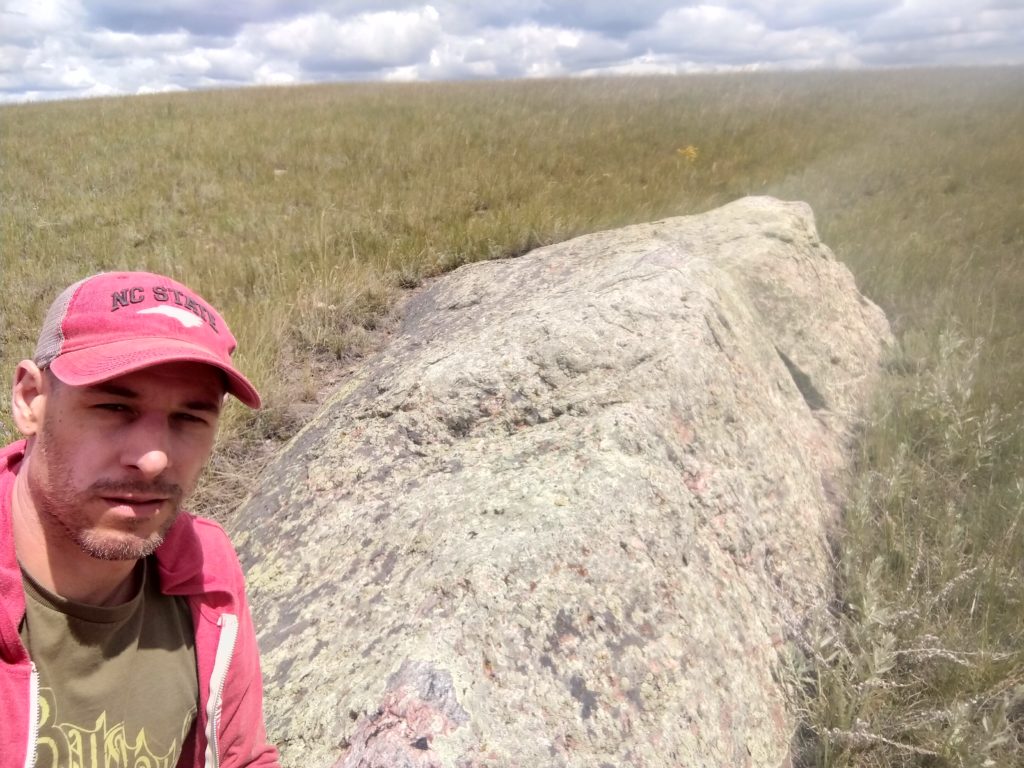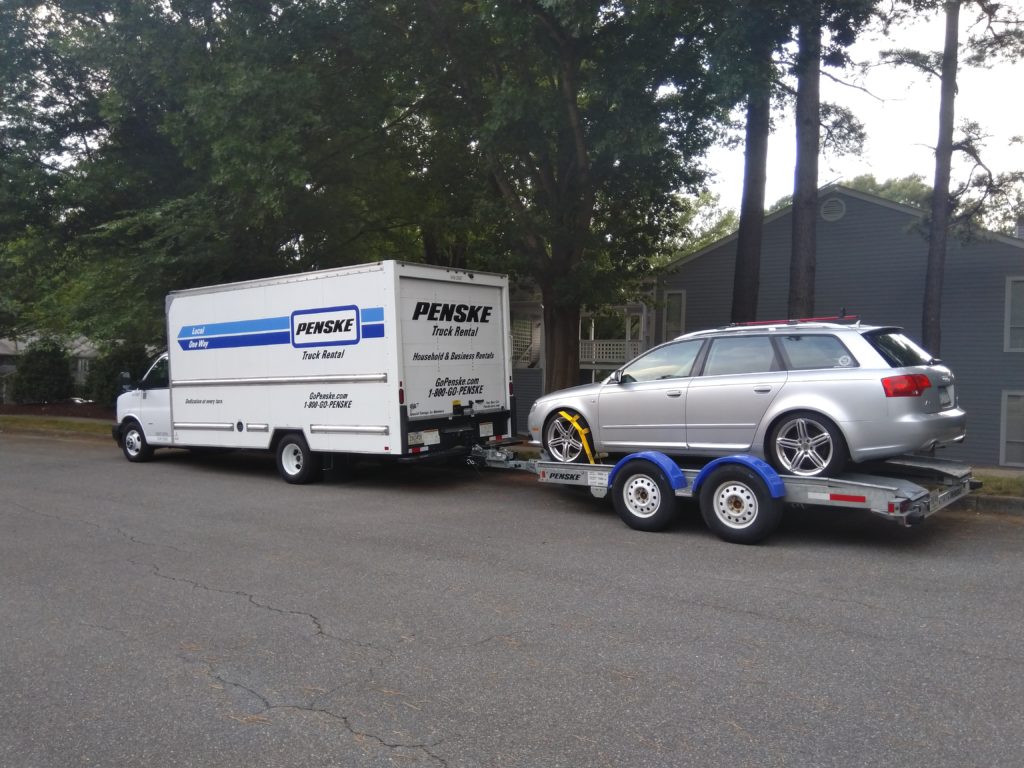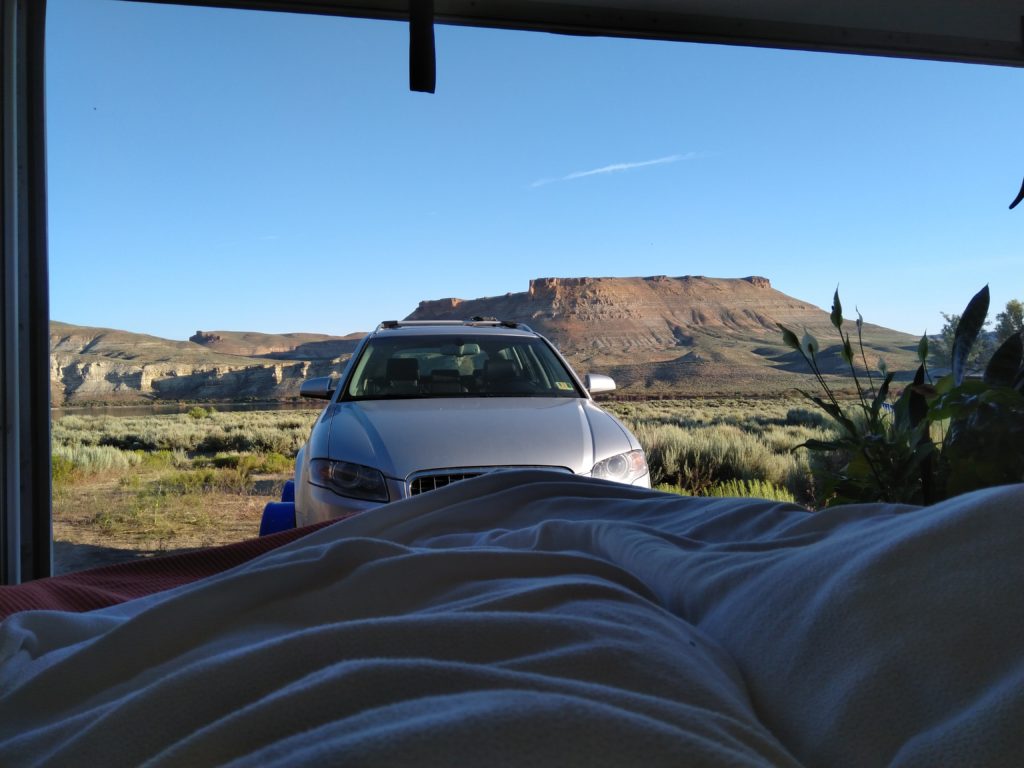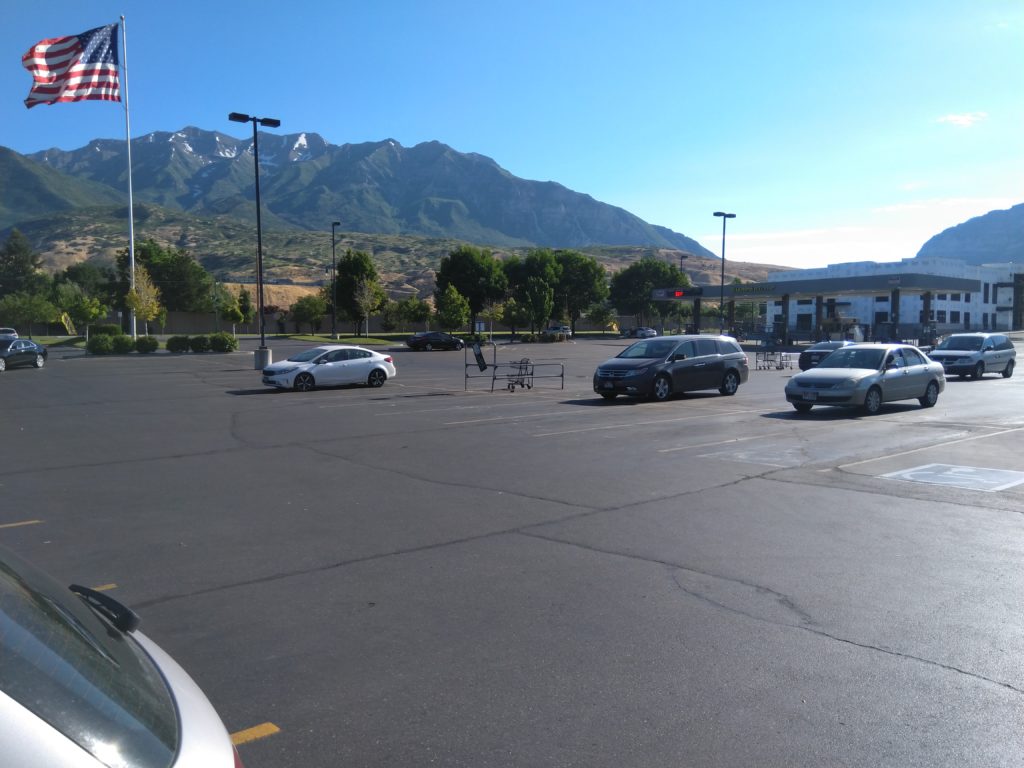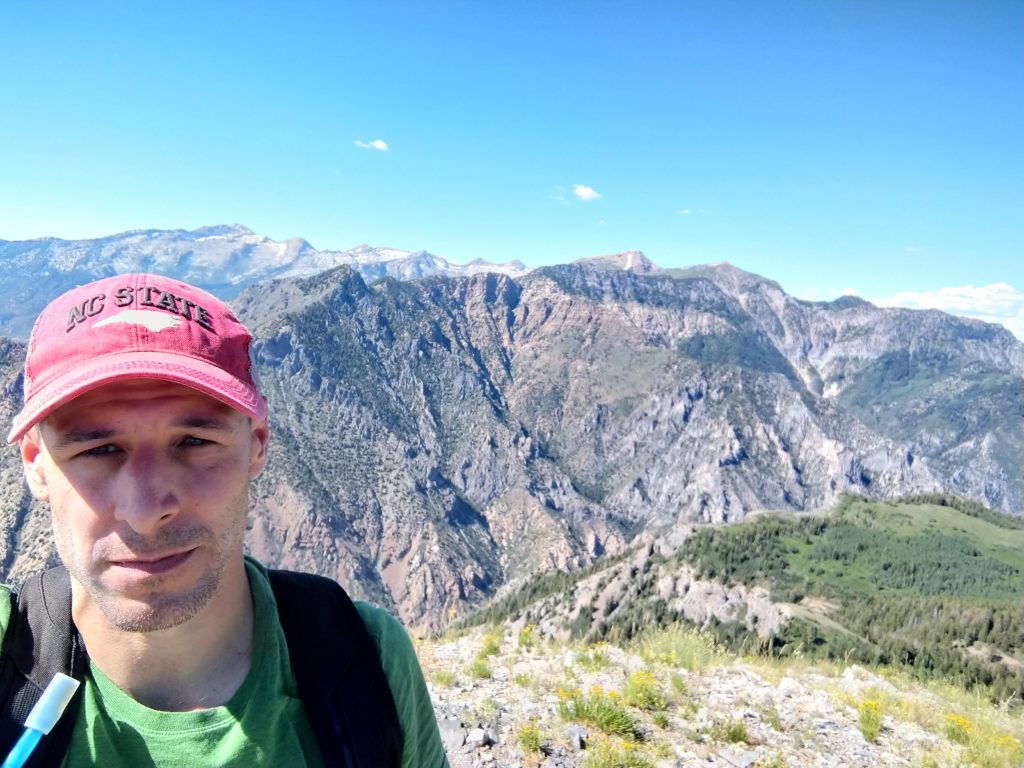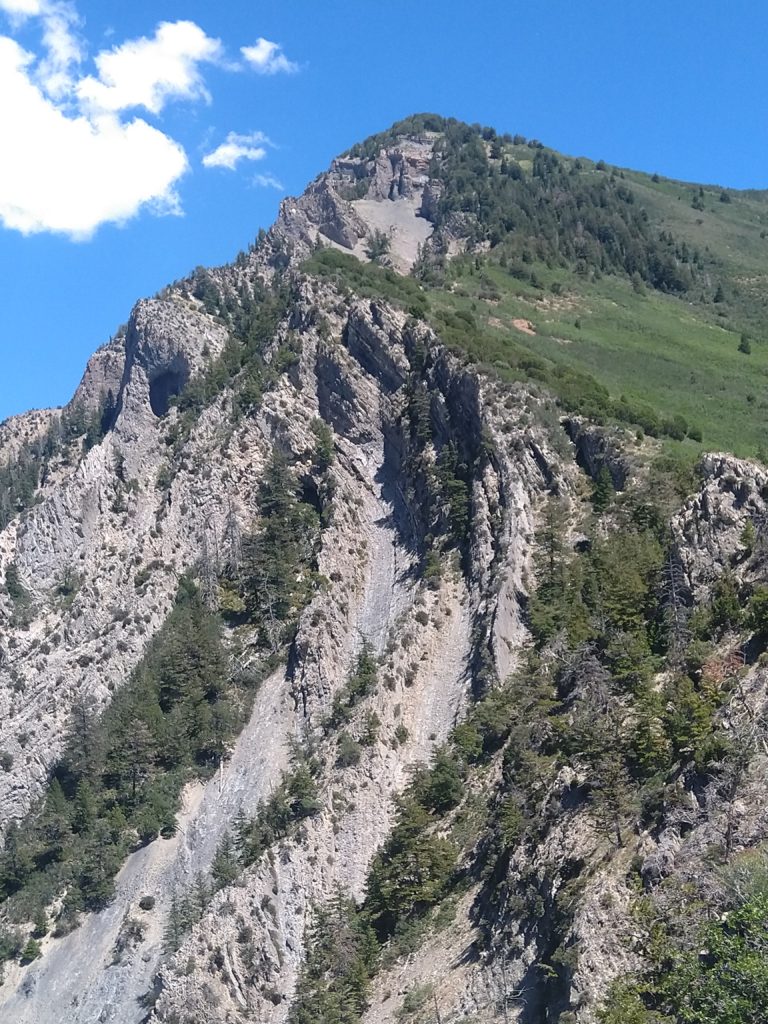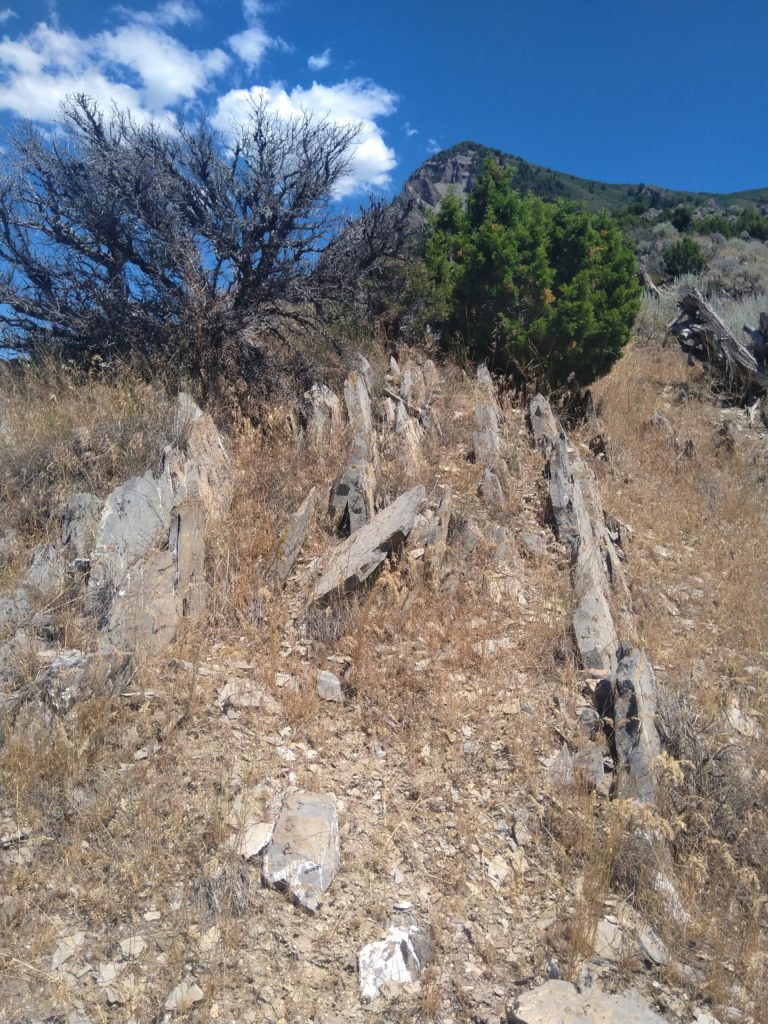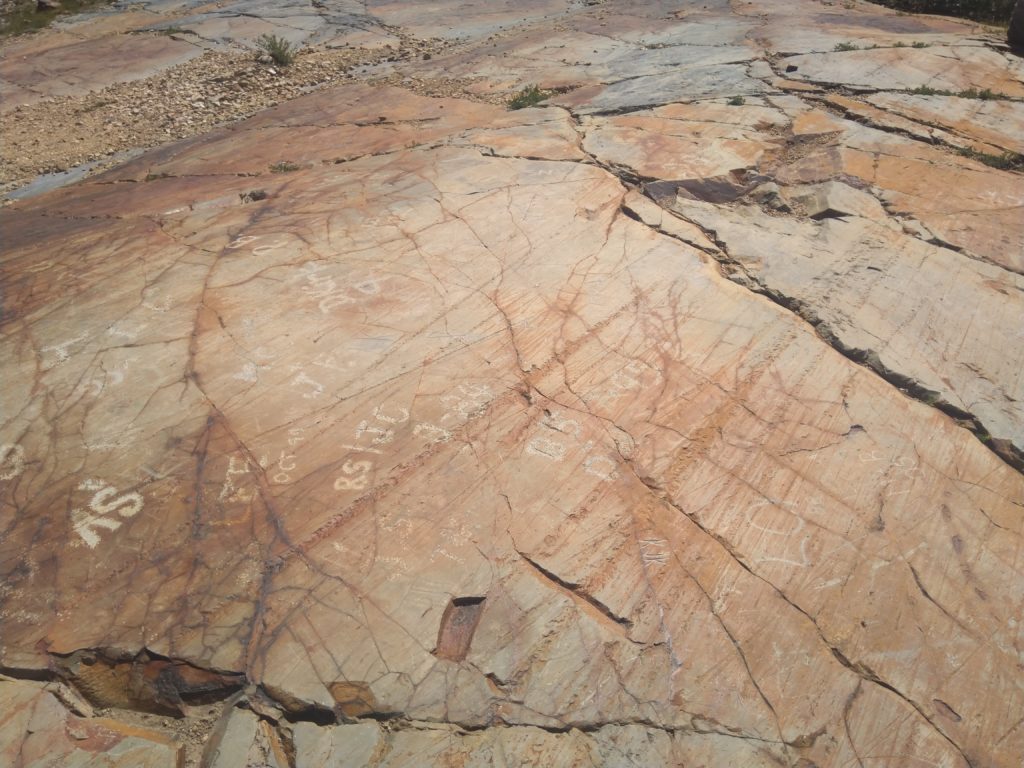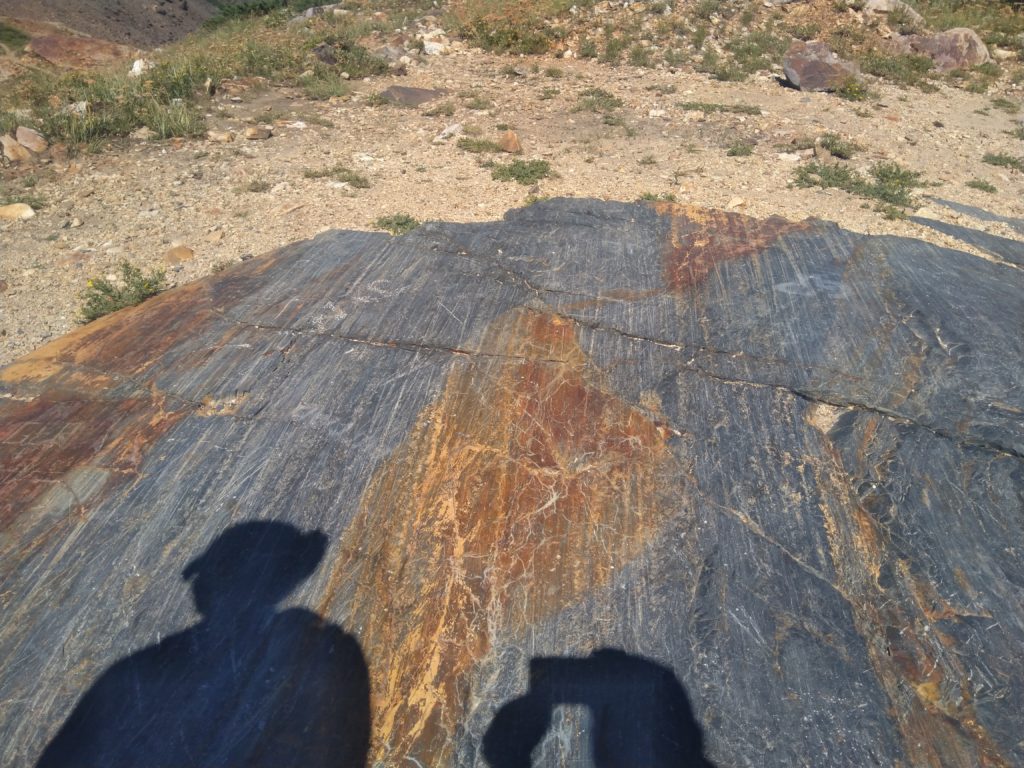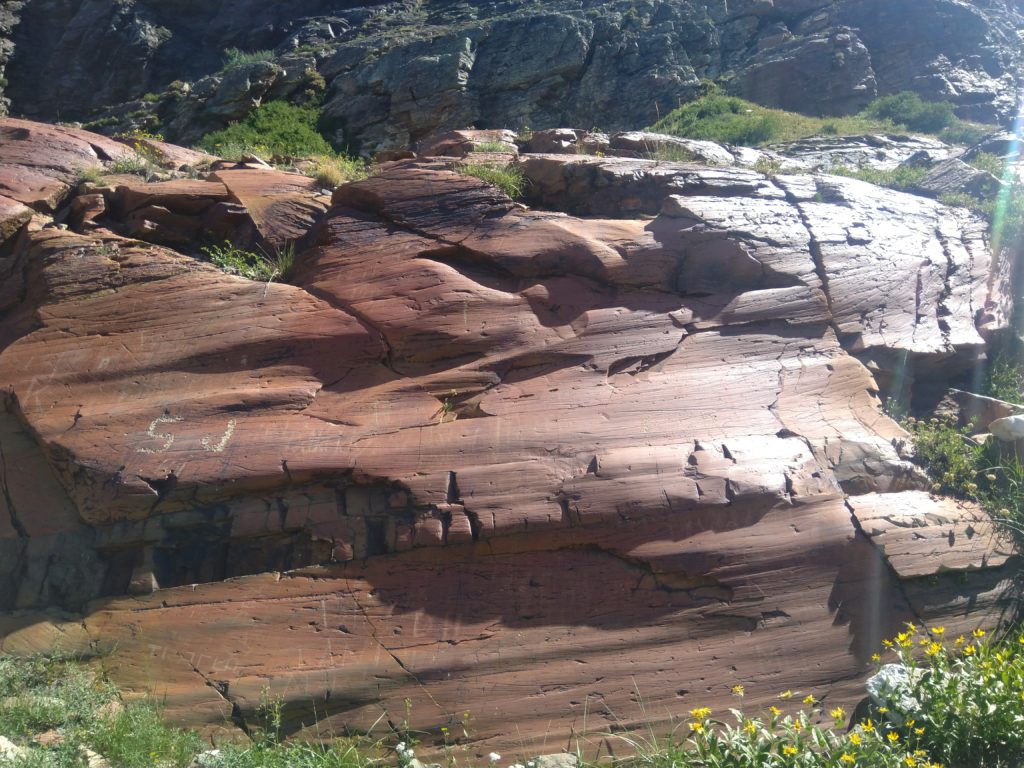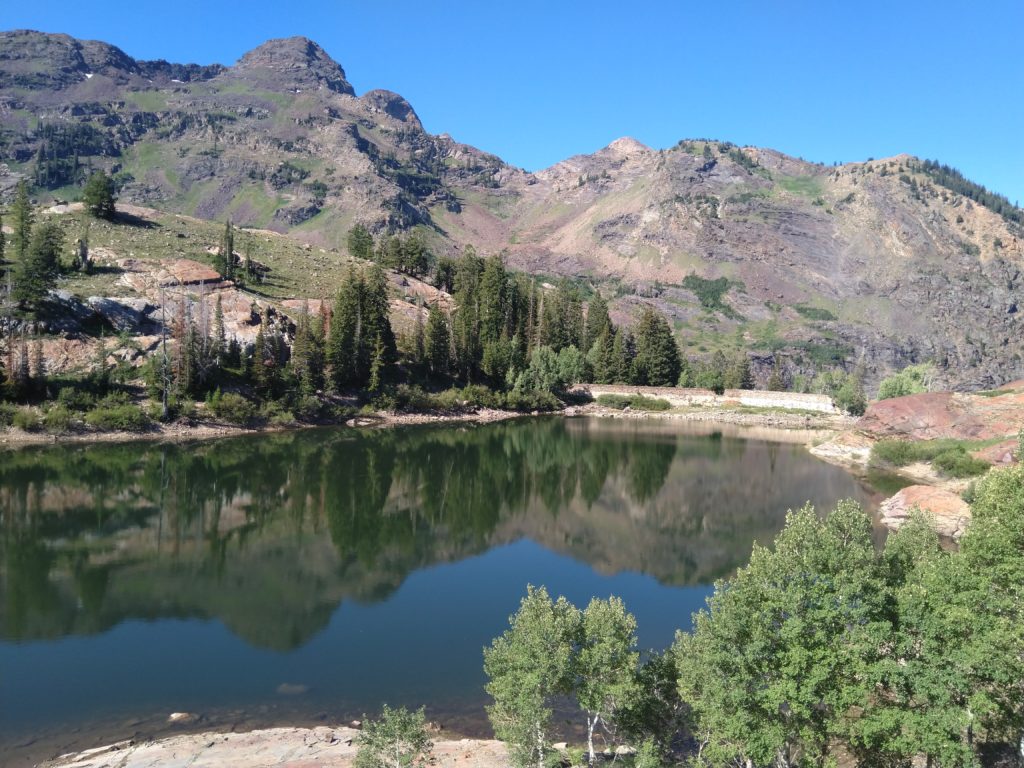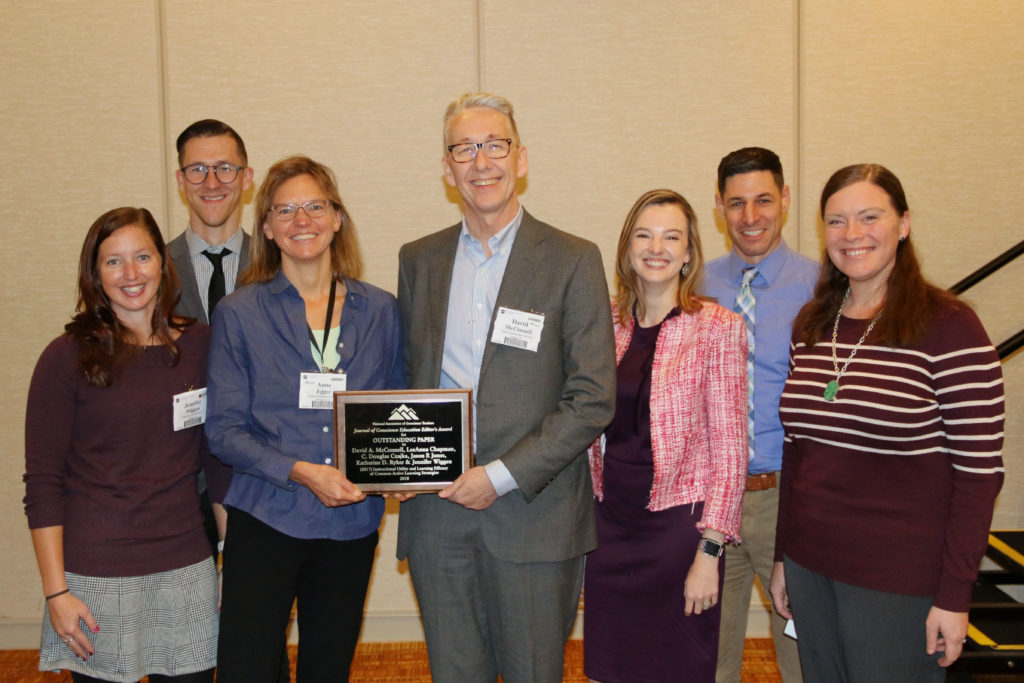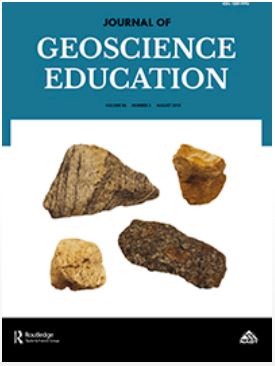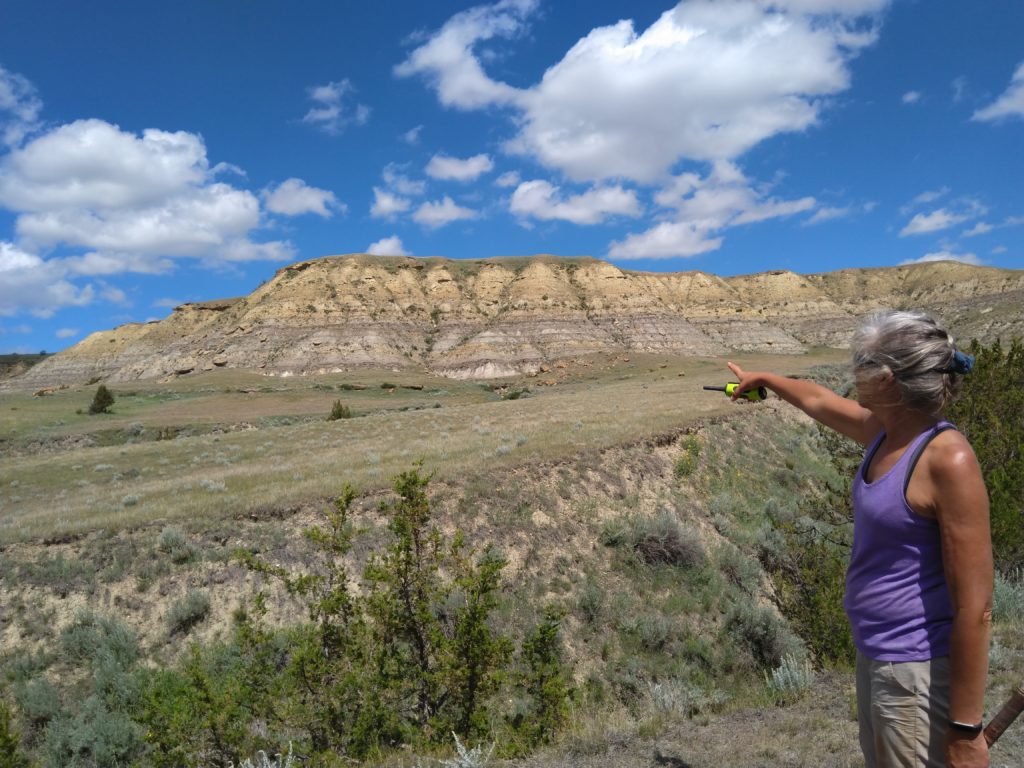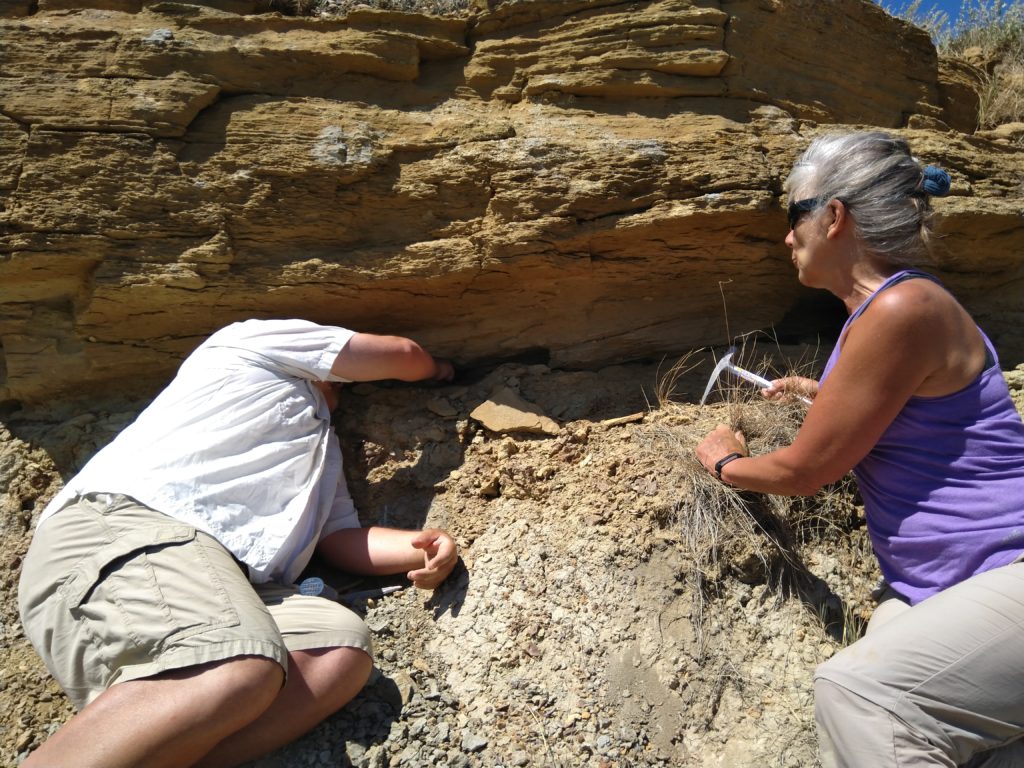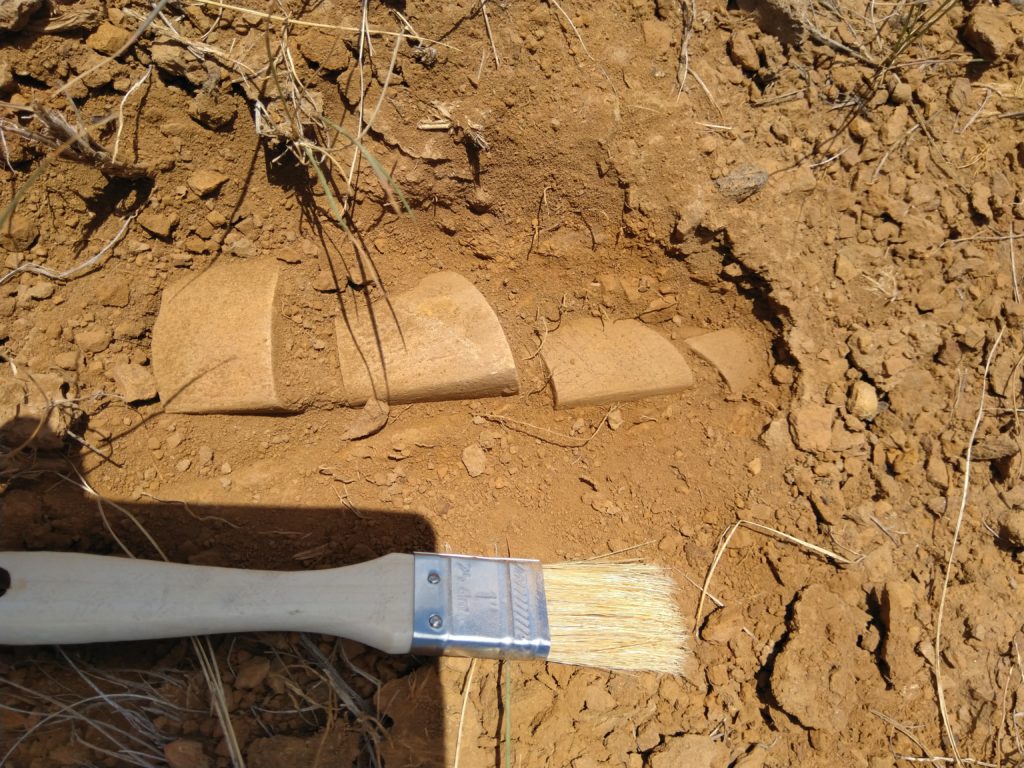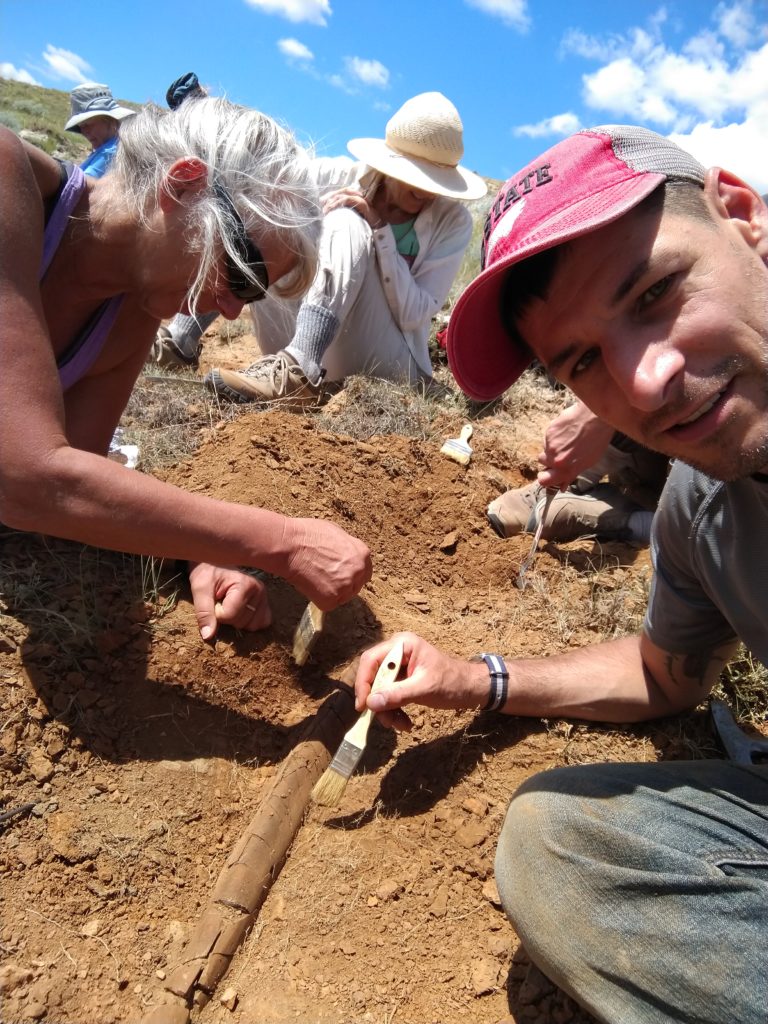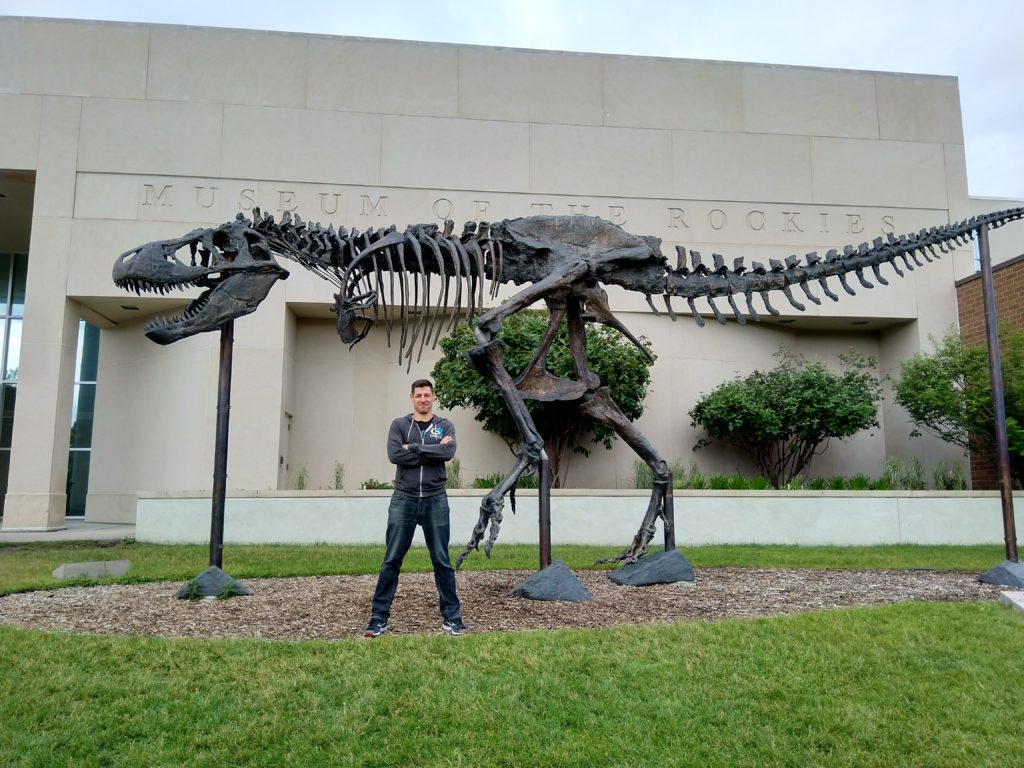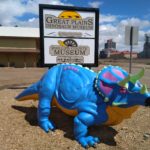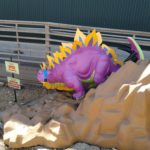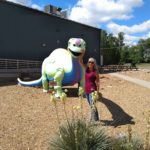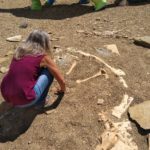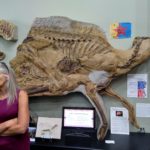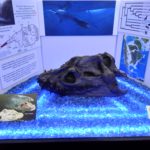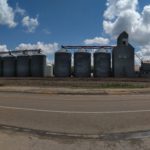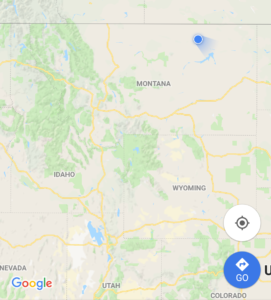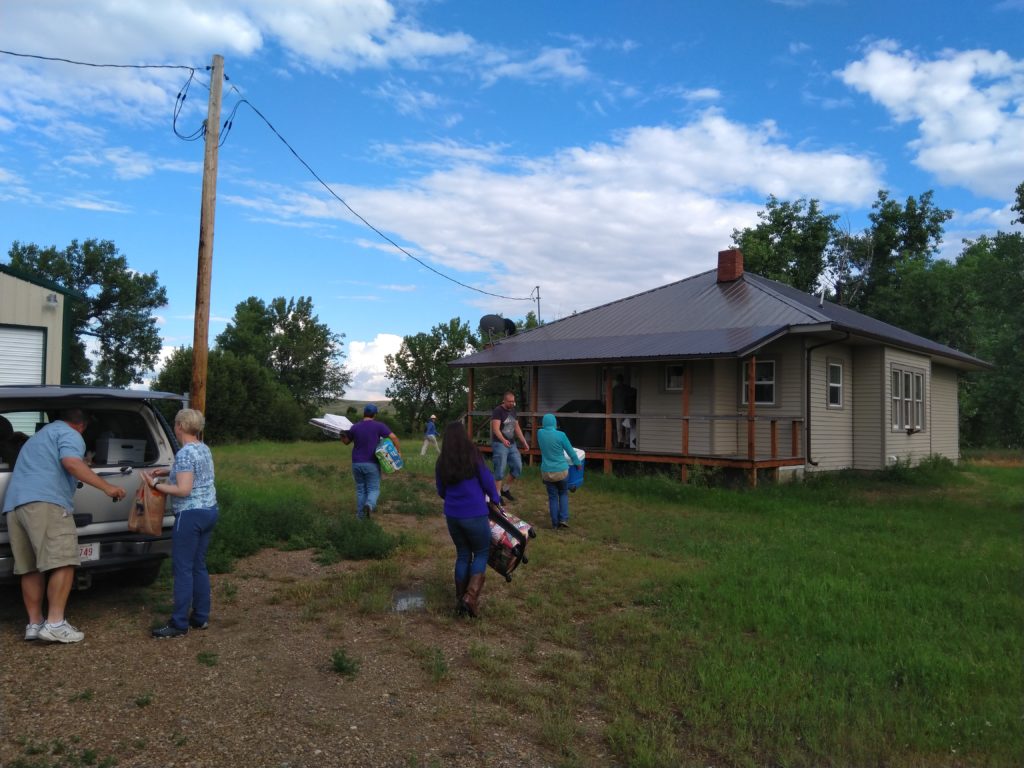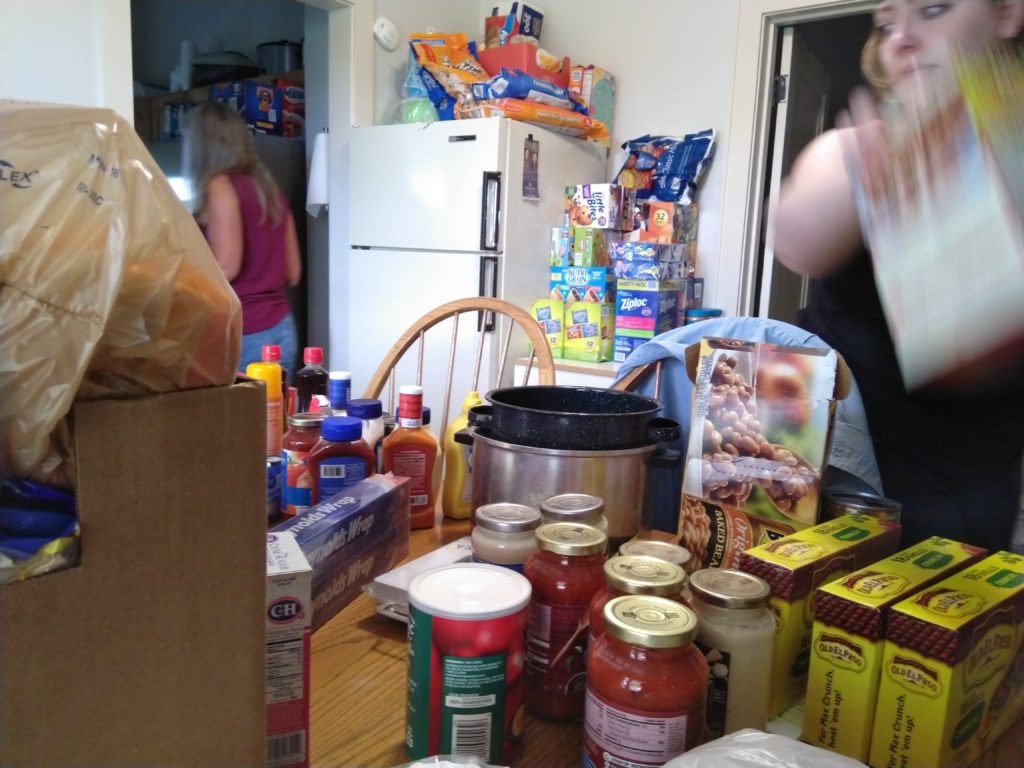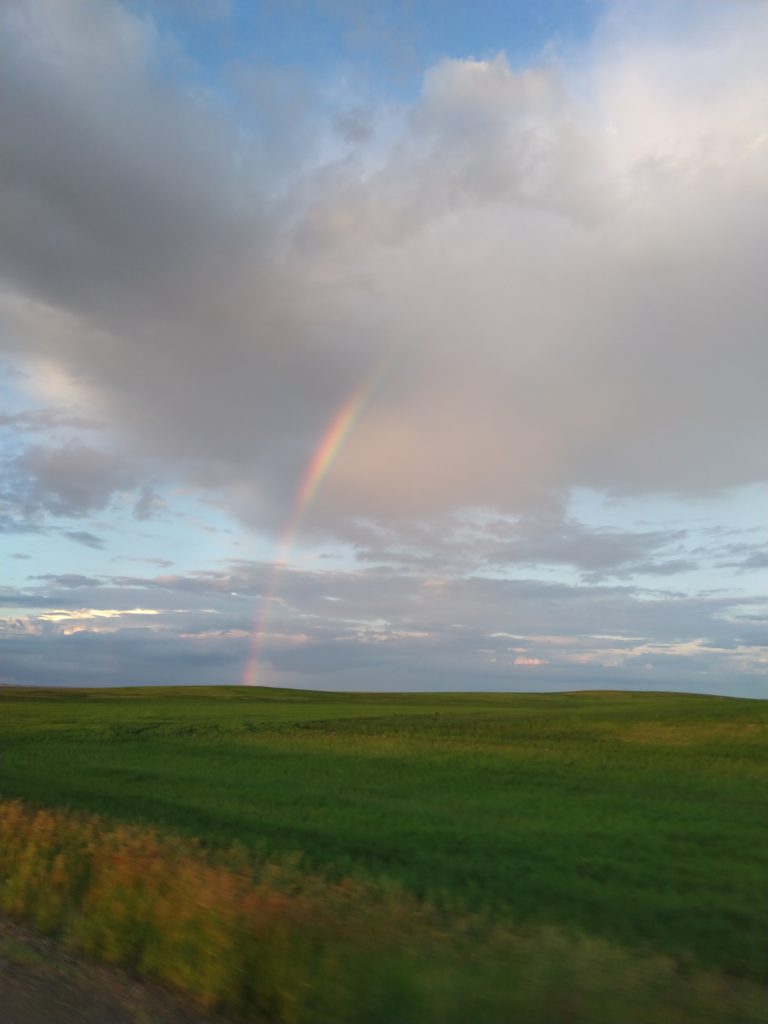Field work has been tiring, which has kept me from providing updates. Today was the last day in the field for the NC State Crew, and we head back to Bozeman tomorrow. It really has been quite exciting and a lot of fun, so I’ll recap the past few days.
Tuesday
On Tuesday we split into two groups to continue prospecting some new areas in the Judith River Formation. I joined Mary, Ellen and Kaitlyn to hit up some exposures West of the Rock Creek which ran through the middle of the field area.
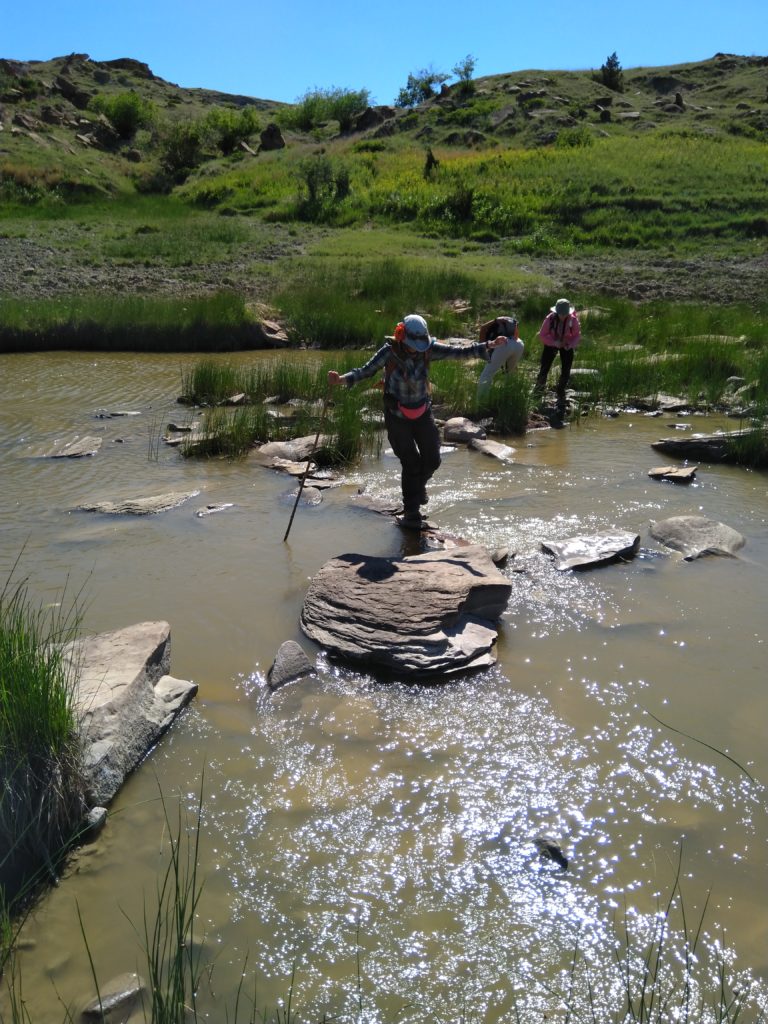
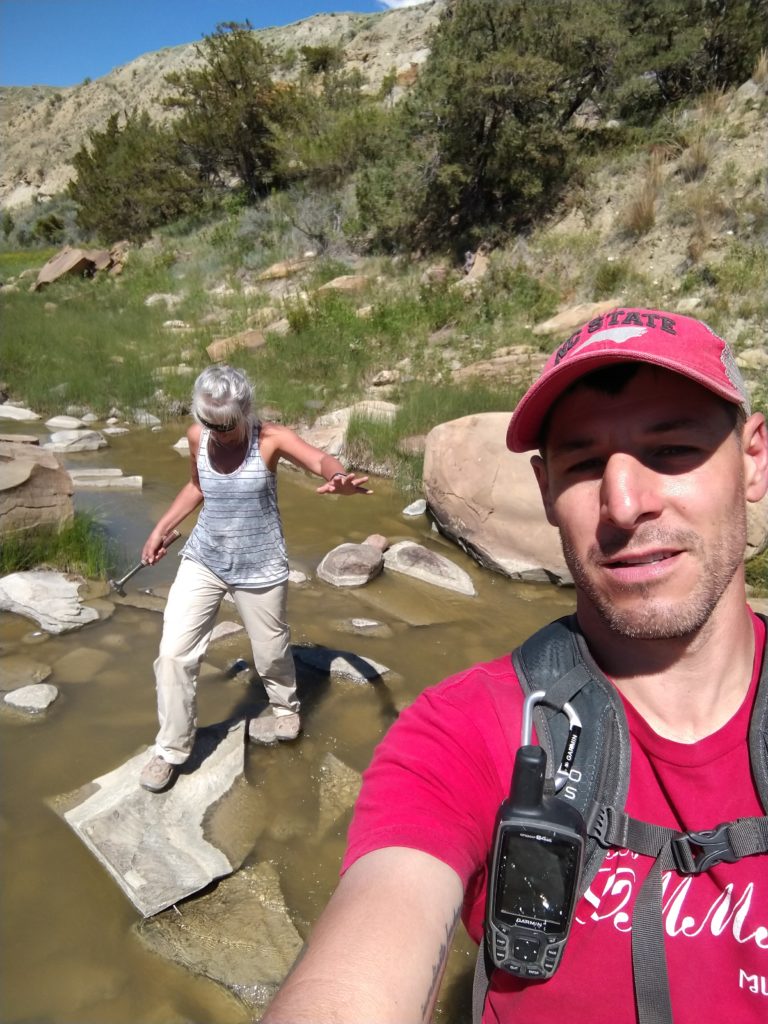
No shortage of creek crossings
While we didn’t find much other than some scraps of eroded bone, it was a rather enjoyable day of hiking through the Montana badlands.
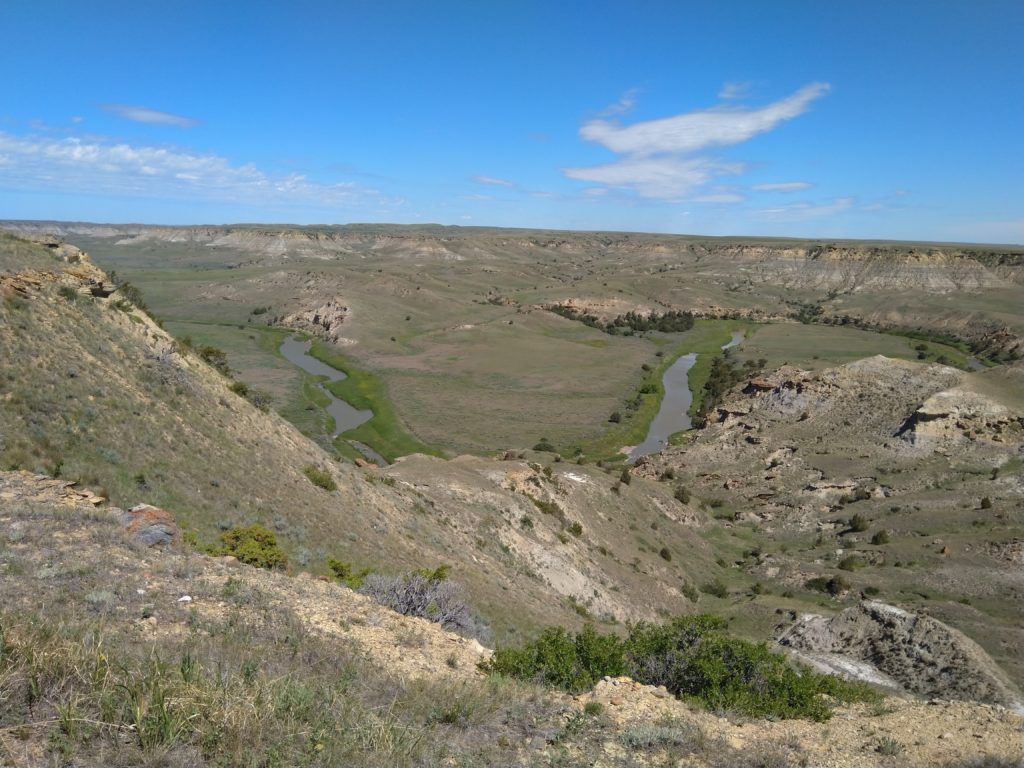
Wednesday
On Wednesday we also split into two groups, but this time one group went to go prospecting in the Bear Paw shale for marine vertebrates. I stayed with the Judith River group to continue looking for dinosaurs west of the Rock Creek. We spent all morning prospecting and still didn’t find much. Again, the hiking and views really dull the disappointment of non-discovery.
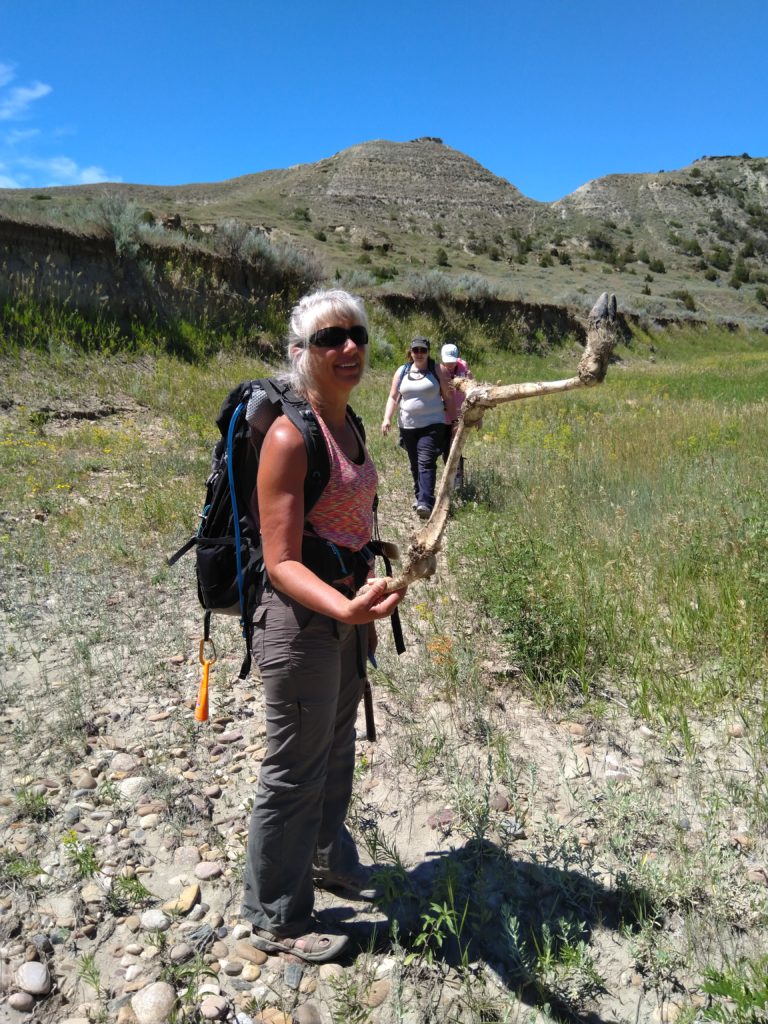
Mary Loves to pick up dead things
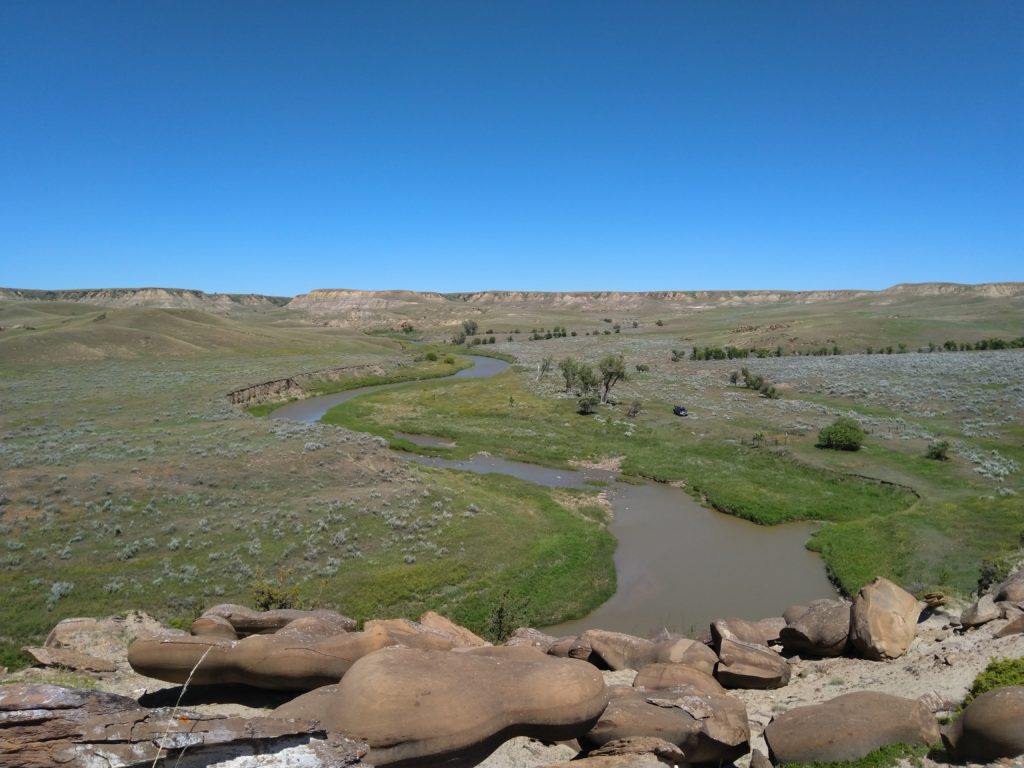
In the afternoon, we decided to head back over to the site that Mary found under the sandstone ledge and see if we could excavate some of the fossils in the underlying sandstone. We managed to get out a broken theropod tooth and Elena and I worked to uncover a rather large hadrosaur leg bone.

What we started with
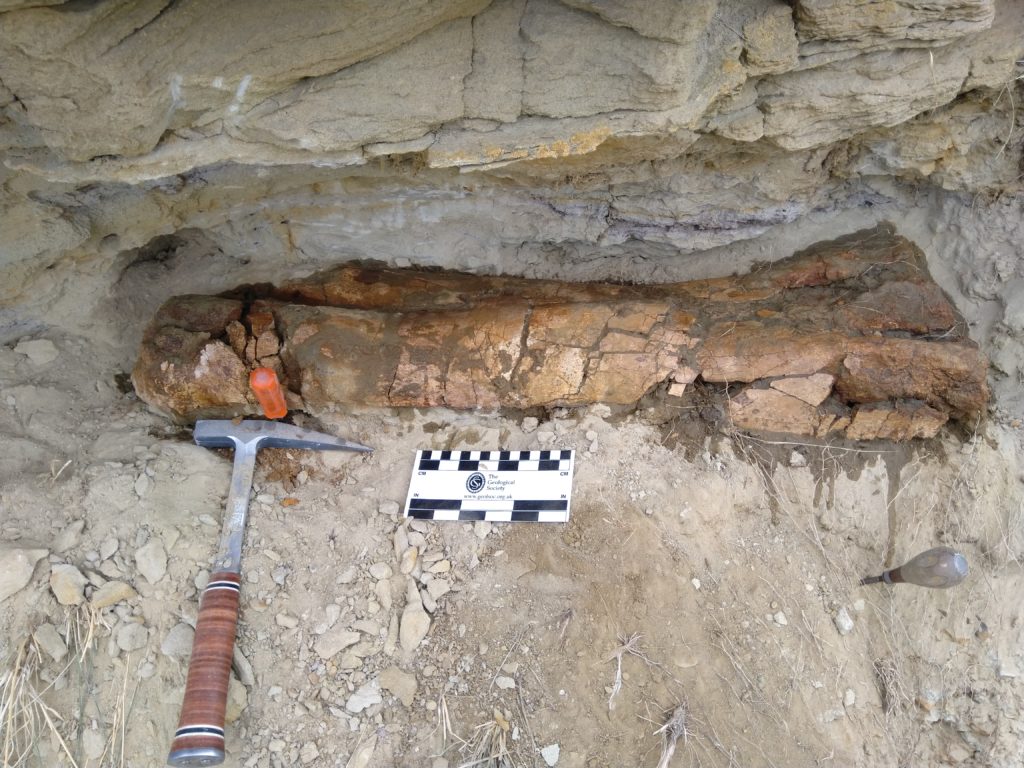
Finished product awaiting a plaster top jacket
While the Judith River group didn’t have much luck finding anything, Johan with the Bearpaw group did find some bones that belonged to a plesiosaur, but got rained out before they were able to excavate too much.
Thursday
Thursday was another two group day. I headed west with Bob, Mary, Kaitlyn and Elena to prospect some land closer to Malta and to visit some old sites of Mary’s. It was another day of not finding much and we ended up getting a bit of rain in the afternoon. We also used this opportunity to hit up downtown Malta and get Elena some new shoes, as she suffered some massive boot blowouts on the first day in the field. She did a pretty impressive duct tape reconstruction that lasted through two days of hiking in the field. Impressive.
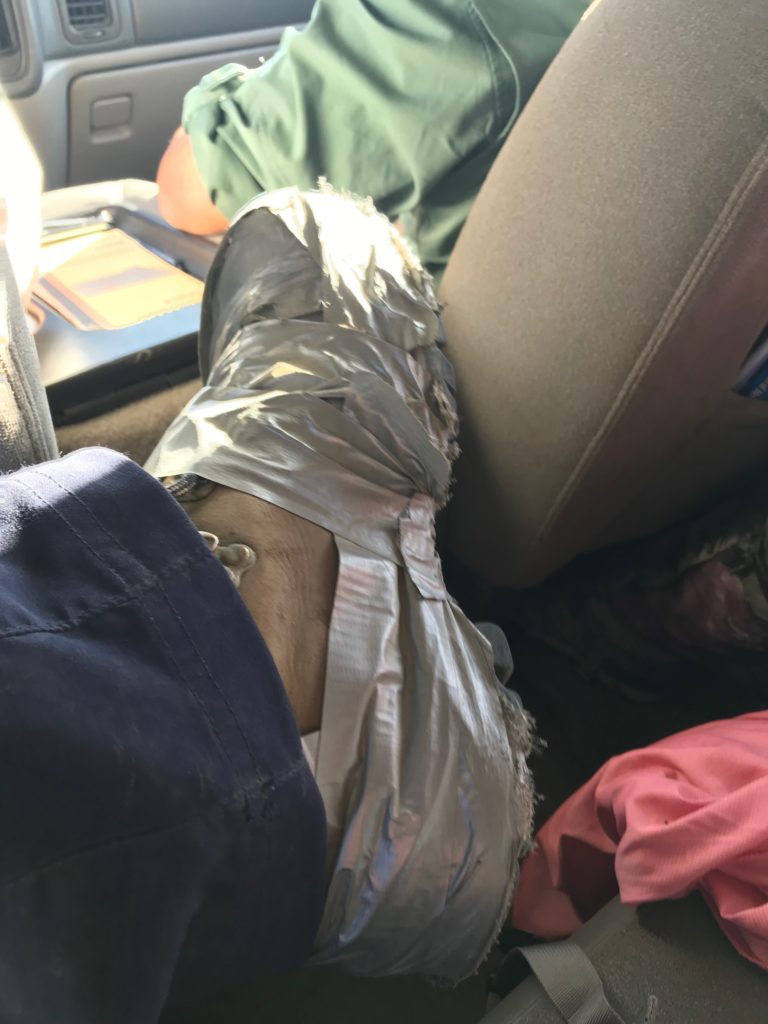
Elena’s reconstructed duct tape boots
Friday
The forecast for Friday was rain all day, so we made no plans to go out into the field. Instead we decided to head to the Fort Peck Dam and Interpretive Center. I really enjoyed reading about the history and engineering of the dam, and the museum had a really great mount of a tryannosaur and a hadrosaur.
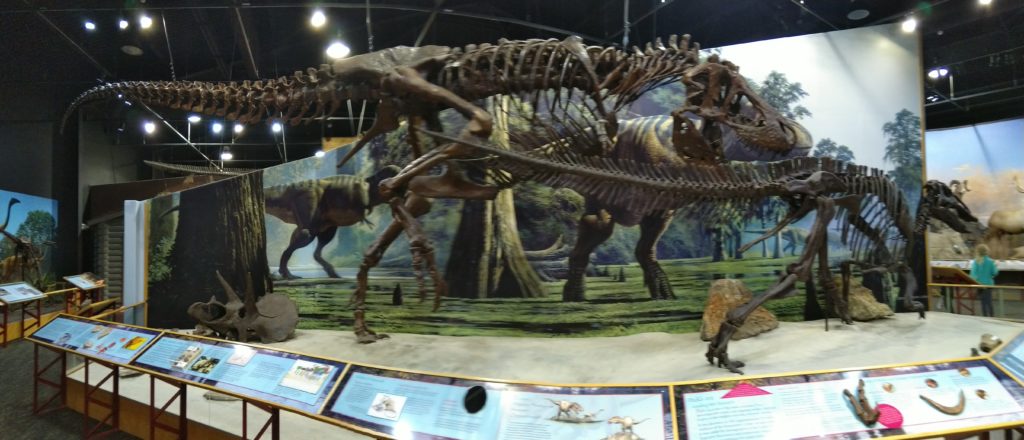
Fort Peck Interpretive Center dinosaurs
While sitting out the rain in the afternoon, the NC State crew got a little restless, so we decided to head into the great metropolis of Saco, Montana, population 197. We hit up the Old Brand Saloon for some beers among the locals.

Downtown Saco, Montana
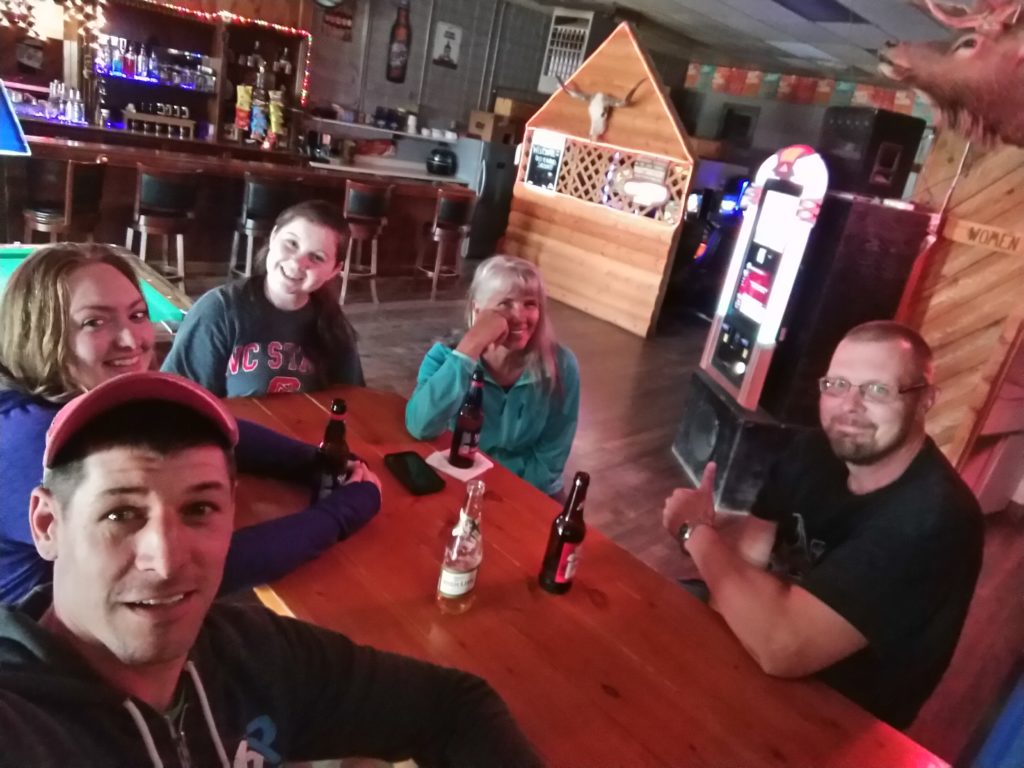
The NCSU crew and Johan

The decor did not disappoint
Saturday
On Saturday the whole crew (minus Johan who had to return to Bozeman) headed to the Bearpaw Shale site to continue excavation on the plesiosaur.
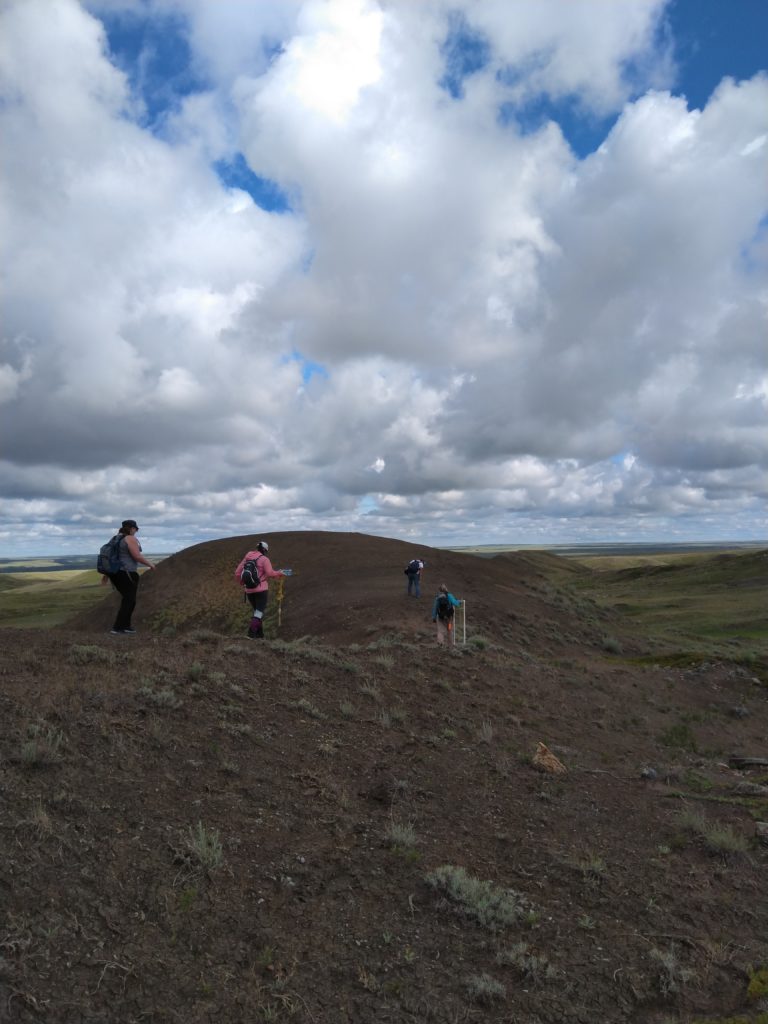
paleontologists walking into their natural habitat
As we continued to take the quarry deeper into the hillside, we began to uncover some amazing bones including a beautiful rib, a lower jaw with an intact tooth, and eventually a larger skull. What we were unearthing was a relatively complete mosasaur! It was actually quite a surreal experience to be uncovering such a large beast from the sediment it came to rest in 76 million years ago. Quite different from seeing them prepared and in a museum, at least for this geologist.
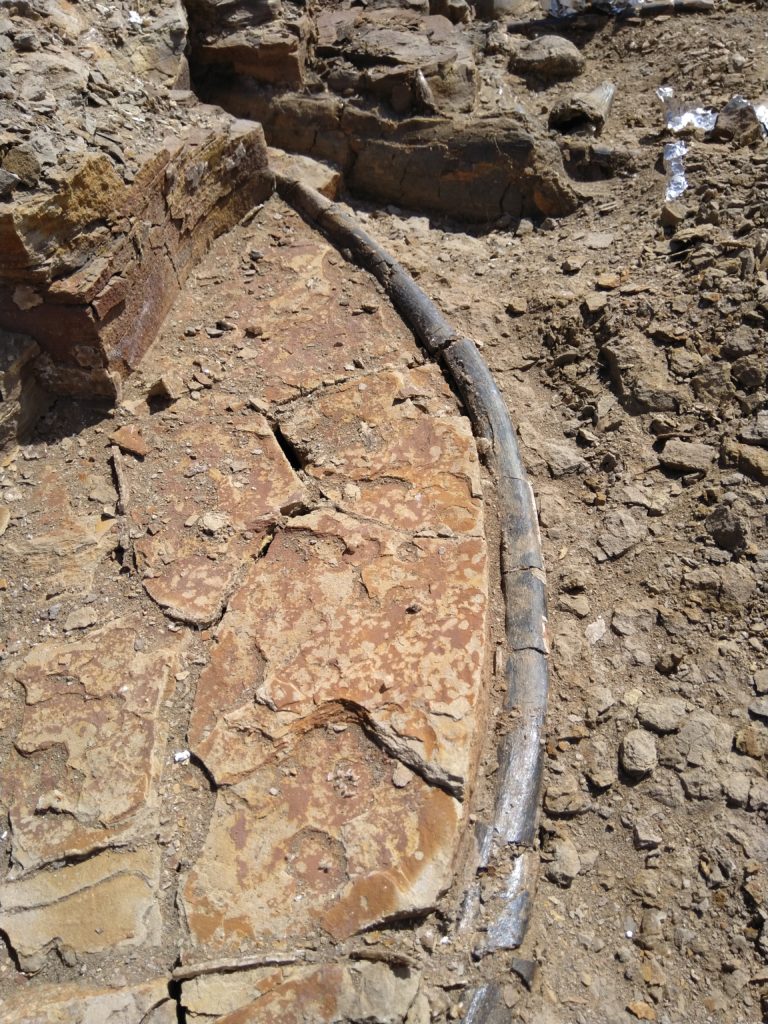
Beautifully curved rib
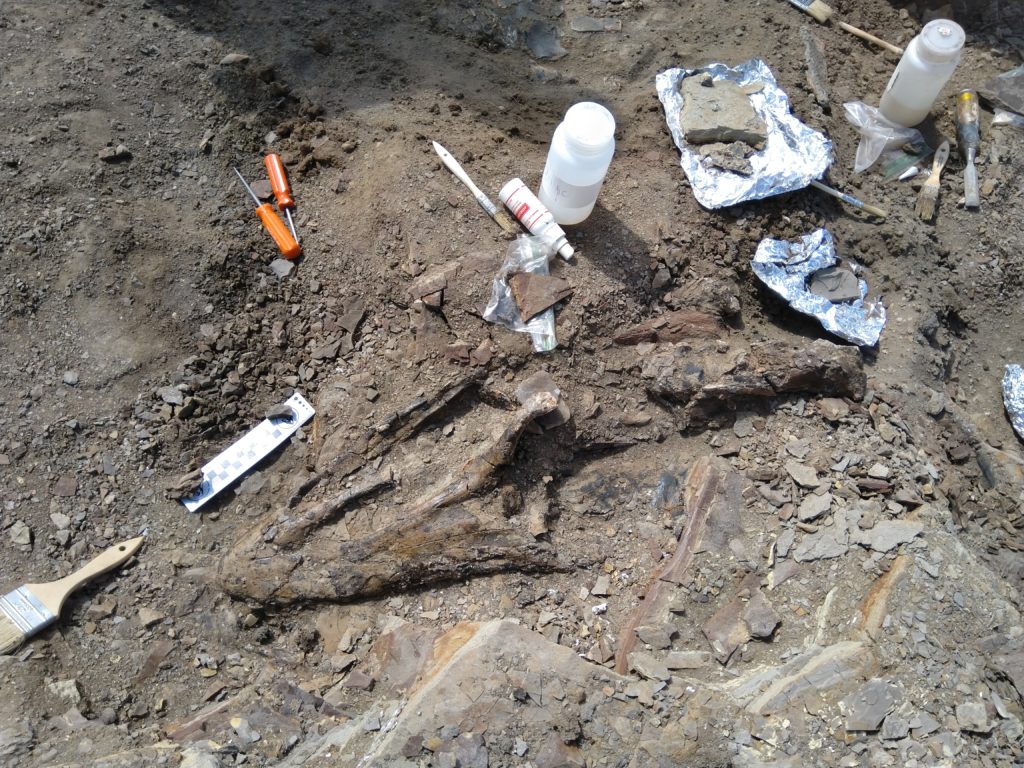
Skull being excavated
Sunday
While half the crew did some mapping and jacketing at the mosasaur quarry, Mary, Kaitlyn and I did about an hour of prospecting in the Bearpaw shale. After that, we headed with Bob back to the Judith River Formation to jacket and recover some of the bones we found earlier. Unfortunately, we didn’t get a whole lot done before it started to rain then hail, which was quite uncomfortable since the temperature dropped about 15 degrees to go with the wet hail. We headed back to the cabin shortly after as the weather was not going to cooperate with us trying to recover our dino bones.
We headed back to camp and are ended our last day of field work by watching Jurassic World on TV, which seems extra fitting considering our big find.
I’ve had a blast over the last week prospecting and excavating with both the NCSU and MOR crews, and cannot thank Mary enough for inviting me out. I hope I get the chance to get back out here again soon.
So long Montana!

Big Sky Country
